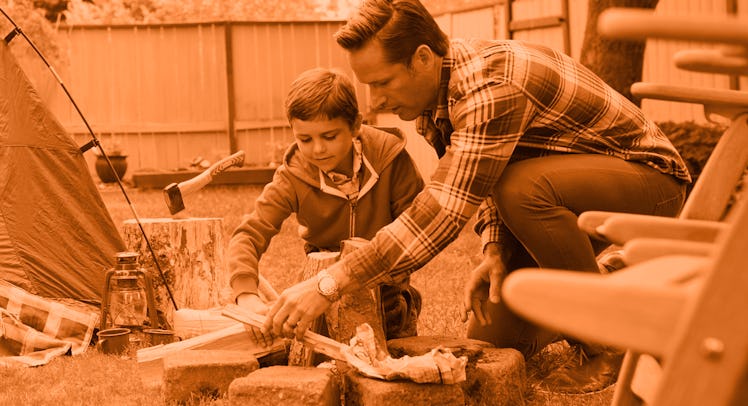Let Kids Play With Fire (To Keep Them Safe)
Having a child play with matches isn’t such an awful thing. Particularly with adult guidance and an eye towards using fire as a tool.

Seeing a child playing with matches doesn’t instill confidence in American parents. But things are different in Germany. Where American parents are trained to see fire as a threat, German parents accept that fire is a tool that children need to be familiar with and ready to use. It’s a hard idea to get one’s head around if one has breathed in a lifetime worth of smokey fear, but, as it turns out, there really is a responsible way to play with fire.
“Kids need that level of experience with those seemingly dangerous tools, in order to be responsible as teenagers or adults with those tools,” explains Tony Deis, co-founder of Oregon’s Trackers Earth, a “forest school” that helps kids learn about their world through hands-on experiences. “My experience has been, when you teach a child how to use tools, they respect the boundaries and responsibilities associated with them. It’s something innate. It gives them an incredible survival tool.”
The pragmatic uses of fire are bountiful. Not only can it teach a child lessons about thermodynamics, it has a wide range of practical applications. In what he calls “wilderness living situations,” Deis notes that fire can be essential for comfort and warmth, but is also helpful for cooking and boiling water to make it safe. Fire can also be used to make other tools. “It’s often easier to burn something out than carve it out,” he says. “The more you add the practical applications the more kids get excited about it.”
So when can a kid start getting acquainted with fire? “Observation itself is still experience,” Deis notes. He suggests that as early as one year of age children can observe parents modeling how to properly build fires, whether indoors or out. And as a parent works, they can tell a story about building the fire to help it stick.
Eventually, kids will be able to assist, gathering materials for the fire, or helping to build the wooden fire structure before ignition. In fact, a child who has experienced fires being built responsibly by an adult for much of their life is mostly only limited by their dexterity. And as soon as a kid has the physical ability to light a match, Deis notes that there’s nothing wrong with handing the kid a book of matches and letting them try to strike them.
“It can be an activity,” Deis says. “Kids just take turns lighting a match.” In fact, he often challenges kids to see how long they can keep a match burning — all under supervision, of course. “I would say by the time a child is four or five you can have them doing most of the ‘doing’ because they have the dexterity to do it.”
Once a kid can light a match, the should be taught how to build a fire. For outdoor fires, Deis often gives children an activity wherein they are given a single match and five minutes to collect materials to start a fire. The activity begins, however, with a child understanding how to create a fire break — not only around the fire ring on the ground but also avoiding dry branches above and flammable roots below. And, importantly, the fire activity only occurs in places where local and forestry officials have deemed it safe to burn.
For parents who want to introduce their children to fire as a tool, Deis notes that they will want to have the appropriate materials: tinder (highly flammable material like a newspaper or fine twigs), kindling (small pieces of wood) medium-sized sticks and larger halved logs.
The fire should be built in a fireplace or appropriate outdoor space. The build the fire structure to burn, Deis recommends starting with a large base log that the tinder is placed up against. Kindling is then leaned on top of the base log like a grill. More tinder can be placed on top of this grill followed by a medium sized piece of wood, another kindling grate and finally a larger log on top. With enough airflow when the bottom tinder is lit, the structure should burn well.
Deis notes that such fires are easy enough for a kid to burn, but he also encourages parents to give children the freedom to explore
‘I allow them to burn all kinds of things, as long as it’s safe to burn and it’s not unsafe for the environment,” Deis says. “When it comes time to do it on their own, I give them access to the tools and the freedom with those tools.”
With good modeling and the right experience, playing with matches can easily move from menace to lifesaver. And that’s a good thing. Because a kid lost in the woods who has access to a book of matches and knows how to use them will likely come out okay. The kid scolded for playing with fire? Not so much.
This article was originally published on